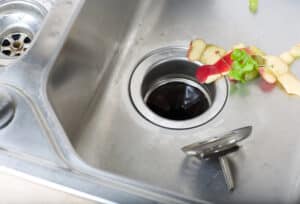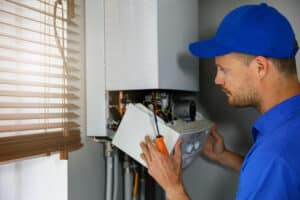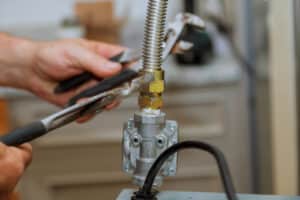Plumbing issues can be a significant headache for every homeowner, but you can prevent many problems by being proactive and implementing preventive measures. At North Star Plumbing, our team of experts routinely encounters a wide range of plumbing-related issues, so we’ve compiled a list of the top 10 most common plumbing problems and how to avoid them.
By becoming familiar with these typical challenges and understanding how to tackle them efficiently, you can save time, money, and stress. In this blog post, we’ll discuss warning signs to watch out for and share simple tips to maintain your plumbing system in top-notch condition. From leaky faucets to clogged drains, our expert knowledge aims to help you avoid these common issues and keep your home’s plumbing system running smoothly. Stay ahead of potential plumbing disasters with the guidance provided in this informative article.
1. Leaky Faucets
It’s no secret that leaky faucets can be a significant annoyance but did you know that a single dripping faucet can waste around 3,000 gallons of water per year? To prevent leaky faucets, regularly inspect the handles and spouts for signs of corrosion or mineral build-up. Replace worn out components or install a new faucet assembly if necessary. Invest in water-saving faucets to reduce your water usage and save on utility bills.
2. Slow or Clogged Drains
Clogged drains are another common plumbing issue that can potentially lead to costly repairs if not addressed quickly. To avoid slow or clogged drains, avoid disposing grease, oil, or any non-biodegradable items down the sink, and use a drain cover to capture hair and debris in the bathtub or shower. Periodically clean drain stoppers, and consider using a combination of baking soda, vinegar, and hot water for a natural, eco-friendly cleaning solution to clear your drains.
3. Running Toilets
A running toilet can waste as much as 200 gallons of water per day according to the Environmental Protection Agency. Prevent a running toilet by checking the toilet tank components for any worn-out parts such as the flapper, fill valve, and flush valve. Regularly clean the tank and replace any faulty components to ensure optimal performance and prevent water wastage.
4. Low Water Pressure
Low water pressure can be the result of several factors, including old or damaged pipes, sediment build-up, and malfunctioning pressure reducing valves. To avoid low water pressure, regularly inspect the aerators on your faucets and showerheads for sediment build-up or damage; if an aerator is severely clogged, simply replace it with a new one. In homes with well systems, ensure the pressure tank is functioning correctly by occasionally checking its settings and pressure.
5. Water Heater Issues
Inadequate hot water supply and water leaks are two common water heater problems many homeowners experience. To prevent water heater issues, flush the tank annually to remove sediment build-up. Inspect the pressure relief valve for signs of corrosion or other issues and ensure the thermostat is set at the appropriate temperature, usually around 120°F. Additionally, regularly check the anode rod and replace it when needed, as it helps prevent rusting and corrosion in the tank.
6. Leaking Pipes
Pipe leaks are not only wasteful but can lead to structural damage in your home, as well as compromising your water quality. Prevent pipe leaks by insulating exposed pipes, especially during the colder months, to avoid freezing and bursting. Routinely check for any signs of corrosion, leaks, damp spots, or mold around your plumbing system. Re-caulk around sinks and tubs, and stay proactive with general maintenance to keep your pipes in excellent condition.
7. Garbage Disposal Problems
Garbage disposal issues are frequently caused by improper use or lack of maintenance. To avoid problems with your garbage disposal, always run cold water when using the disposal to solidify grease and fats, making them easier to break down. Avoid disposing of fibrous materials such as onion peels, celery, and potato skins, which can tangle the disposal’s blades. Regularly clean the disposal with natural cleaners like baking soda and vinegar, and use citrus peels for a fresh scent.
8. Sewer Line Backups
Sewer line backups can cause unpleasant odors and potential health hazards in your home. Prevent sewer line backups by not flushing non-biodegradable products such as baby wipes, sanitary napkins, or paper towels down the toilet. Plant trees and large shrubs away from the sewer line to reduce the risk of root intrusion. Consider installing a backwater valve to prevent sewage from flowing back into your home during heavy rainstorms.
9. Frozen Pipes
Preventing frozen pipes is crucial to avoid costly and extensive repairs. Insulate all exposed pipes and hose bibs during winter months. Keep the heat on at a consistent temperature, even when you are not home. Open cabinet doors in colder areas of the house, like bathrooms and kitchens, to allow warm air circulation. If you notice a pipe is frozen, use a hairdryer or space heater to slowly thaw the pipe, and open the faucet slightly to relieve any built-up pressure.
10. Sump Pump Failures
Sump pump failures can lead to basement flooding, which can cause expensive water damage to your home. Test your sump pump regularly to ensure it is functioning correctly, especially during heavy rain seasons or when you anticipate a power outage. Clear any debris from the sump pit and surrounding area, and check the float switch for signs of wear or malfunction. Replace your sump pump if it is outdated or showing signs of failure.
By following these preventive measures and regularly maintaining your plumbing system, you can avoid many of the most common plumbing issues and ensure the efficiency and functionality of your home’s plumbing system.
Trust the Experts at North Star Plumbing
Taking the time to maintain and care for your plumbing system can help you prevent these ten common plumbing issues, saving you time, money, and potential stress. However, sometimes situations may arise that require the expertise and experience of a professional plumber. That’s where North Star Plumbing comes in, providing exceptional service for both residential and commercial clients in McKinney, Texas, and the surrounding areas. Our unparalleled knowledge and expertise will ensure that your plumbing system is in the best possible condition and operates efficiently for years to come.
Don’t hesitate to reach out to us for all your plumbing services in McKinney – from preventive maintenance to emergency repairs. Visit our website or call us today to schedule an appointment and experience the North Star Plumbing difference for yourself.






